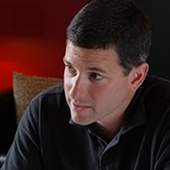Writing interview scripts in advance of a session lets researchers review and revise wording to elicit useful and unbiased responses from participants. However, in many interview formats, a significant portion of each session involves ad-hoc, probing, follow-up questions that require researchers to think quickly to maximize their time with participants. In my experience, this is where the potential to introduce bias is the greatest. In addition, conducting a successful interview involves more than just asking questions. There are also a number of guidelines for how researchers should interact with participants to enable successful interviews. These include monitoring body language, recognizing self-censoring, and understanding the correct balance between leading an interview and listening to a participant.
Experienced researchers may become more comfortable in different kinds of interview situations and have an easier time interacting with participants during interview sessions. But, over time, researchers may also develop familiar patterns for asking questions and ways of interacting with participants that could prevent them from uncovering a unique perspective in the context of a particular interview. Also, the introduction of bias in an interview is often subtle, and it may be difficult even for researchers with years of experience to notice it during one of their own sessions.
Seven Interview Best Practices
Given everything there is to remember to ensure we conduct successful interviews, I find it helpful to remind myself of the following seven key best practices immediately before an interview session:
- Set proper expectations. Generally, interview participants are not experienced with the user-centered design process. A recruiter may have given them a brief description of the purpose of an interview during the recruiting process, but it’s very likely participants don’t have a clear sense of why they are there. They may be apprehensive, nervous, or skeptical about your intentions. Business stakeholders especially may come to a session with a negative attitude if they believe a researcher is there to check up on them. All of this will serve to influence the responses they give to interview questions. To minimize this impact, be sure to describe the intent of the interview, your role in the design process, and how the interview process will proceed. Include details such as why you will be taking notes and how you will compile the results.
- Shut up and listen. As a researcher, it is easy to get wrapped up in the interview script you developed, all of the questions you want to ask, and your own ideas about the salient points to uncover. It is easy to dominate the conversation and move through the interview at a pace that is too fast for a participant to keep up. In my experience, participants often raise the most interesting points only once they’ve had a chance to internalize and think about a researcher’s question. Listening appropriately involves minimizing interruptions and slowing down the pace of the interview to give participants an opportunity to qualify their statements or provide additional insights.
- Minimize biased questions. Asking leading or biased questions is all too easy to do. Even a simple question such as How did you like that process? subconsciously suggests to participants that they should like the process more than they should dislike it. In our attempt to be conversational, such questions as these often roll off the tongues of even the most experienced interviewers. I’ve found the best way of minimizing these types of leading questions is to read a set of good and bad examples before an interview session. Examples might include:
Bad: How did you like the login screen?
Good: What do you think about the login screen?
Bad: Is the feature helpful to you?
Good: Is the feature helpful or not helpful to you? Why?
Bad: Would this be a good idea?
Good: How valuable would this be to you in your job?

